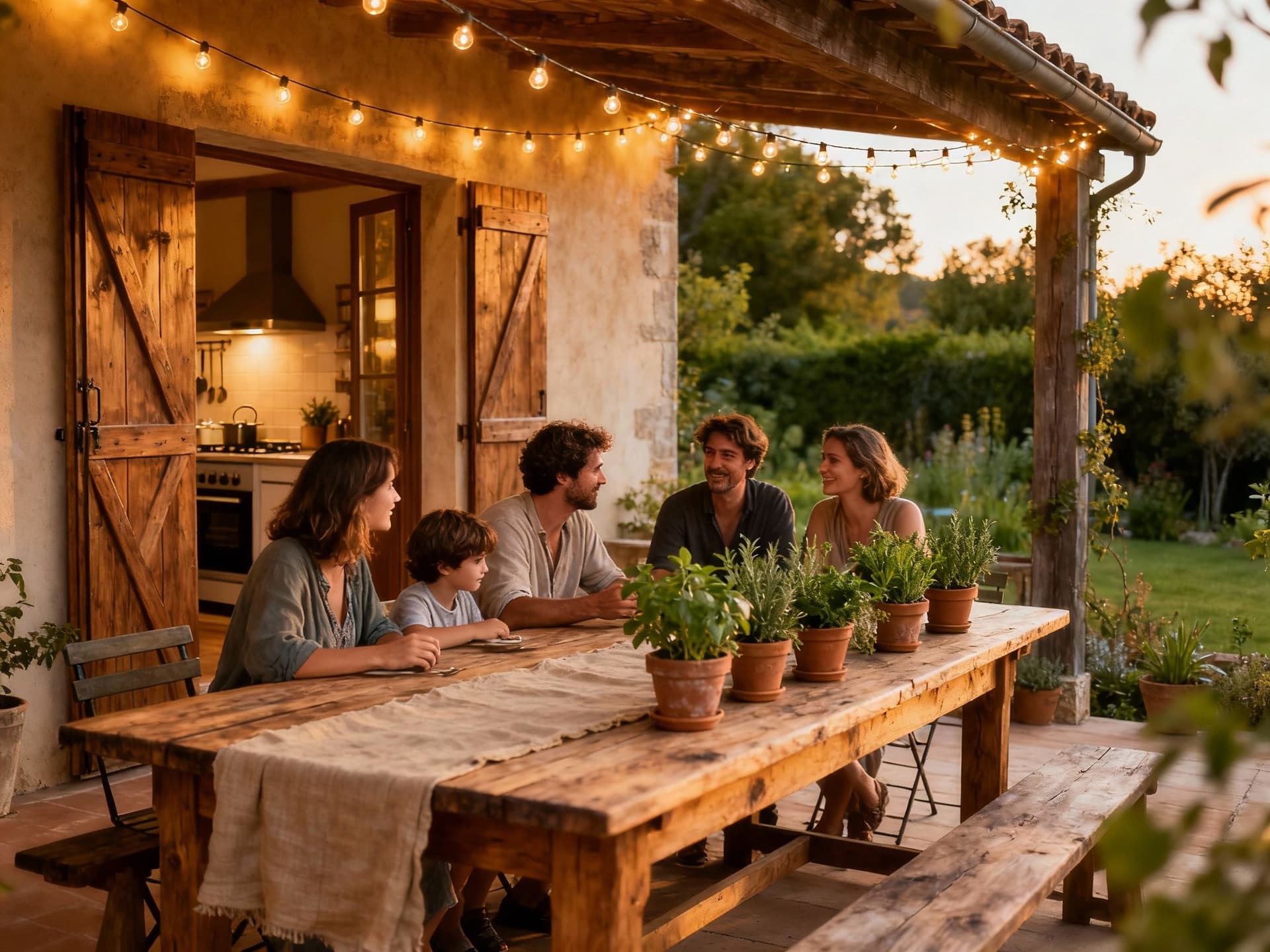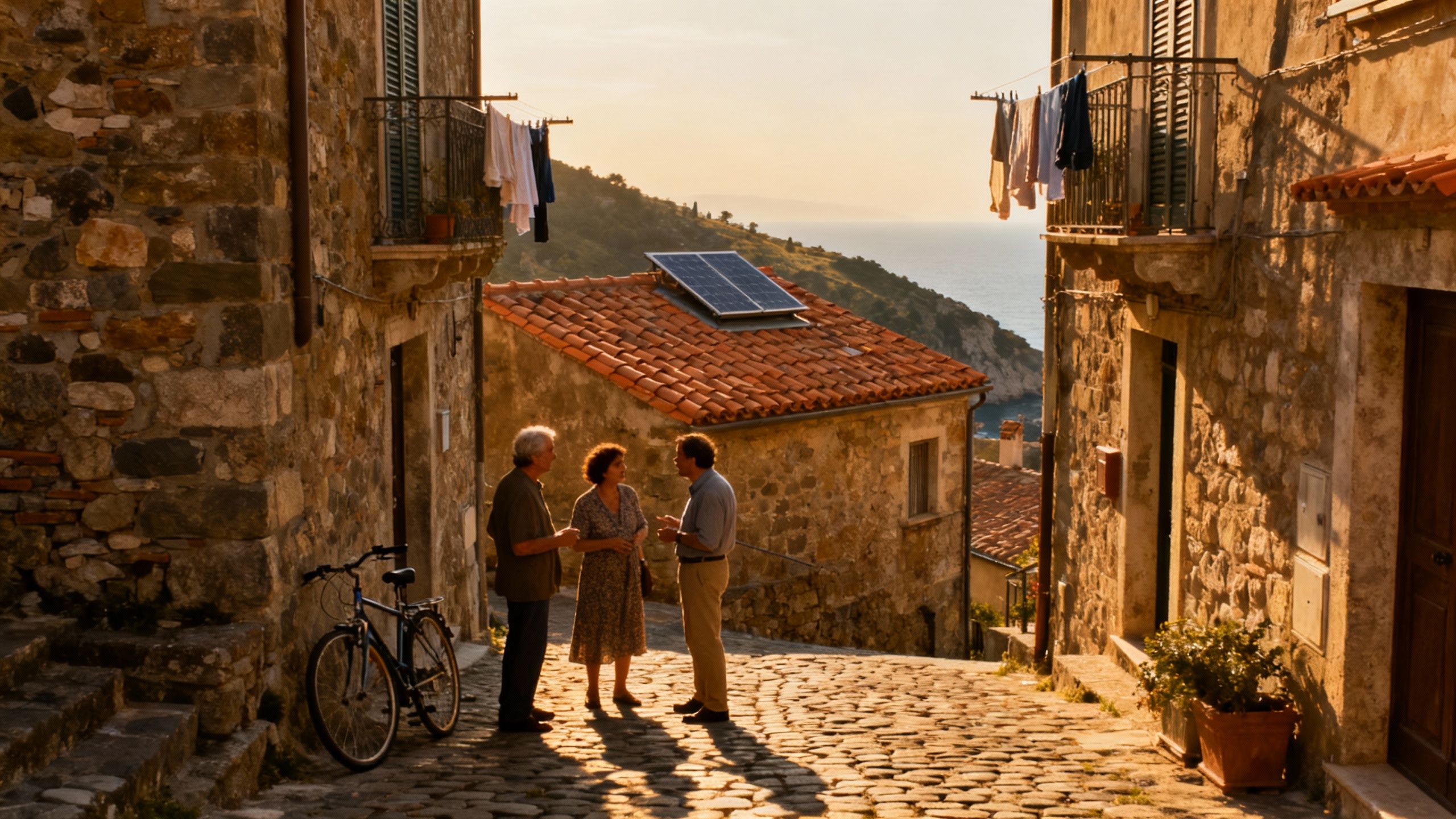France: Seasons, Stewardship & Smart House Moves
France’s 2025 market stabilised—fall in love with seasonal markets, village life and green homes, then match that lifestyle to pragmatic, eco-minded buying steps.
Imagine waking to the smell of warm croissants, but instead of battling tourists you step out into a neighbourhood where the weekly market spills chestnut-scented air, stalls are run by the same families for generations, and your home—stone, timber, or sunwashed stucco—lights with solar panels at dawn.
Living the France Life: Seasons, Streets and Slow Mornings

France moves with seasons: spring markets in Provence, surf mornings on the Atlantic coast, foggy forest walks in Dordogne. Recent national data shows residential prices stabilising in early 2025, which means the dream of a green rural house or a coastal pied-à-terre is increasingly within reach for thoughtful buyers. These rhythms shape where locals buy, how they use space, and what features truly matter—good shutters, a well-placed vegetable garden, and rainwater capture on the roof.
Village mornings and city rituals: Where life feels lived-in
In villages like Gordes or Cap Ferret the day begins with bakers who know your order; in Marseille or Lyon cafés pulse with espresso and conversation. Parisians often hunt for nearby second homes—Aix-en-Provence or the Loire—so local culture and rail links matter. These habits are why access (train times, bike routes) and community services shape both lifestyle and resale value.
Food, markets and seasonal living
Picture Saturday market runs: oysters on ice at Cap-Ferret, wild mushrooms in Périgord, early tomatoes at a Provençal marché. Food culture dictates home life—kitchen gardens, large pantries, cool cellars—and often the property you choose must fit these rituals. If you love local producers, choose proximity to a market and a kitchen that welcomes long meals rather than a tiny kitchenette built for turnover.
- Lifestyle highlights to scout in person
- Weekly market on the main square (look for farmer regulars and stall longevity)
- A café where baristas remember names — good for language practice and slow mornings
Making the Move: Practical Choices That Protect the Lifestyle
The dream is tactile, but so is the paperwork. With prices stabilising in 2025 and regional variation strong, the right practical choices let you keep the life you imagine: prioritise passive cooling, rainwater systems, and community ties over showy sea views that sit empty half the year. Local agents who understand seasonal living—how a village fills in summer, quietens in winter, or hosts a truffle fair—are worth their weight in local cheeses.
Property types that suit a nature-first life
Stone farmhouses with thick walls are cool in summer and forgiving in winter; peri-urban townhouses near a TGV station balance access and farmland views; smaller Provençal mas with terraces invite herb gardens and solar arrays. Think about how you’ll use the house across seasons—space for drying chestnuts, root-cellar storage, an easy-to-maintain garden—and choose a property that supports those rituals.
Working with local experts who value place
Look for agents or notaires who can speak to neighbourhood microclimates, local craftsmen for lime-plaster restorations, and installers who fit solar or heat pumps to period walls. Agencies that blend sustainability knowledge with local intelligence save time and preserve the character you fell for.
- Practical steps that keep lifestyle first
- Visit a property in two seasons to judge daylight, wind and neighbourhood life.
- Prioritise energy-efficient upgrades that preserve character: insulation, double glazing sympathetic to frames, and discreet PV.
Insider Knowledge: Real Talk From Expats and Locals
Expats tell a common story: the nicest features are lived habits—a neighbour who brings eggs, a small artisan boulangerie, and a council that protects local trees. Market data supports a quiet recovery in 2025, but the real risk is buying the wrong rhythm: a sea view you’ll only enjoy three months of the year, or a house that needs invasive modernisation that strips its character.
Language, community and everyday belonging
French social life unfolds at market stalls, school gates and town hall fêtes. Learn key phrases, join a local association (fête committee, repair café), and shop locally. Integration isn’t about fluency on day one—it’s about showing up and sharing in seasonal rituals.
Long-term stewardship: care that protects value
Treat a purchase as ecological stewardship: restore with local materials, maintain stonework and lime plaster, plant native hedges, and choose low-impact heating. These actions keep your home beautiful and help prudent buyers tap resale markets that reward authenticity—data shows stable regional price rebounds when towns retain character and green infrastructure.
- Red flags expats often miss
- A property without a declared water source or with ambiguous easements (check cadastral records and local mairie).
- Very new renovations that replace original materials with incompatible synthetics—these reduce long-term value.
- Homes with seasonal-only access roads that become impassable in winter (visit in wet conditions).
In short, fall for the life—then lock in the practicals. Scout markets and neighbours before offers; choose local craftsmen when renovating; and make energy improvements that respect the building’s soul. France rewards patience: a lovingly stewarded home becomes both sanctuary and community asset over the years.
If your heart is in the kitchen garden, the market data is a comfort: prices in many regions stabilised in early 2025 and selective growth is returning. Meet local agents who know who buys in the village square and which craftsmen still lime-plaster walls. That combination—market sense and place care—keeps the dream alive and the investment sensible.
Norwegian market analyst who relocated from Oslo to Provence; guides investors with rigorous portfolio strategy and regional ecological value.


